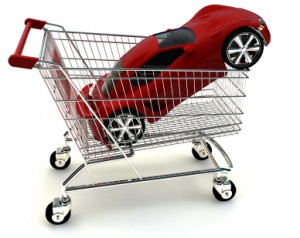
Click here for the CLIMATE-FRIENDLY EATING GUIDE
On this page, you will learn about
- what sustainable consumption is
- what influences our buying behaviour
Click a link in the list above to jump to that topic on this page.
Consumption is part of survival. We need food, water, and shelter to live. But it doesn’t seem to stop there. We also believe we need another pair of shoes to go with the pants we just bought, a new CD, a kitchen gadget, and of course, the latest and greatest electronics.
Consumption itself is not bad, but over-consumption is putting a strain on the health of our environment. The more we consume, the more resources we use and the more greenhouse gases we produce. There are smarter choices we can make to avoid over-consumption.
What we need to do is start thinking about the environmental impacts of our consumption choices. We need to think about the concept of sustainable consumption.
Sustainable consumption
Sustainable consumption is the use of goods and services that satisfy basic needs and improve quality of life while minimizing the use of energy, irreplaceable natural resources, and byproducts (e.g. toxic materials, waste, and pollution) (1)
“Cradle to grave” or “Cradle to cradle”
“Cradle to grave” is the lifecycle most products go through – from raw material (cradle), through production, manufacturing, packaging, transportation, use, recycling and disposal (grave).
Each stage of this lifecycle has a number of inputs (material, resources, and energy) and outputs (products and emissions to the air, water, and land) (2).
Each input and output should be evaluated to determine the total cost of the product.
You may also want to look into Cradle to Cradle. This is a cycle that never ends. Imagine if the grave of one cycle is the cradle of its own or another; the product may change but the cycle never reaches the grave! For more information on this idea visit William McDonough’s website and read his book “Cradle to Cradle: Remaking the Way We Make Things“ (2002) or watch his TED Talk:
Total costs
There are many costs that need to be accounted for when purchasing an item. The Evironmental and Social costs may not be reflected in the actual price.
Environmental costs:
- Extraction of raw material from the Earth
- Material wastes
- Water, air, and land pollution from manufacturing
- Packaging waste disposal
- Emissions from transporting products
- Product disposal at life’s end
Social costs:
- Satisfactory working conditions for staff
- Health costs
Buying behaviour
There are many things in our lives that influence our buying behaviour. For example, our values, current trends, personal experiences, recommendations from others, our habits, our routines, social acceptance, availability of product, and price all affect what we buy. (3) This can also work to create change. By making something a trend or by getting someone to change their habits we can change their buying behaviour for the good.
What you can do
Make smart choices – make well-informed choices that contribute to the well-being of our communities and natural environment.
Always ask:
- Do I need this product?
- Where does the product come from? (How far has it traveled to get to me? Is there a locally produced equivalent?)
- How much energy goes into making this product?
- What will happen to this product when I am finished with it?
Easy ways to find products that help protect the environment:
- Durable – Buy durable products, so you don’t need to replace them as often.
- Fewer – Buy only what you need means less resource consumption and less waste.
- Local – Buy food, products and services that are grown, or produced as close to your home as possible.
- Used – Buy used or reusable products. Often other people’s discard is just the treasure you were looking for.
- Recyclable – Look for recyclable products and ones with recycled content. Recycling reduces the amount of raw material needed for new products. New technologies and designs enable the wide use of recycled materials.
- Packaging – Avoid products with excess packaging. It is best to buy products with no packaging, or returnable, reuseable or recyclable packaging.
- Share – Share or trade your products with others. Use the library, rent DVDs and video games.
Activities you can do in your community to reduce consumption:
- Create a library for sharing material – it can consist of books, CDs, DVDs, and video games.
- Set up a swap day at school or your community centre – you can swap clothing, kitchen supplies, electronics, sporting goods, and household items.
- Organize a sale for used items – the money earned can go to a community garden, greenspaces, or your next environmental project.
Hey Kids! – Kids have influence. – Retail research shows that three out of every four kids influence what food is bought and DVDs are rented. Many kids even influence which car their parents buy. (4)




